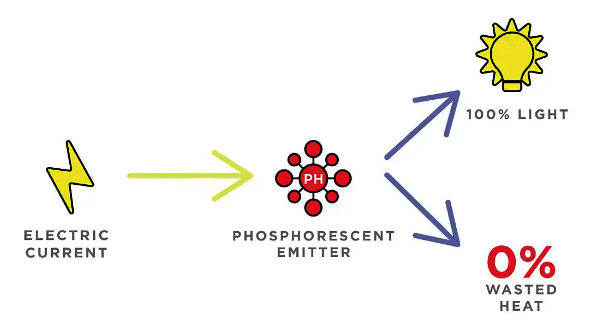
LG Display has reportedly cracked challenges around the durability of phosphorescent blue OLED pixels to create what it says is it’s “dream OLED panel”, with superior brightness, colour accuracy and more energy efficiency.
The report comes from the South Korean website ETNews, but it cannot be confirmed yet as there is no official word from LG Display. Rather, the publication cites an “unnamed individual”, who says the company has finally developed an OLED panel based on blue phosphorescence.
“I understand that they plan to conduct mass production performance evaluations within the year and review commercialization," he told the newspaper.
Admittedly, it sounds like a dodgy source, but ETNews has a decent track record of getting things right, so there’s reason to be optimistic that the report is accurate, even though reports elsewhere would suggest the opposite.
The phosphorescent blue technology in question is often referred to as “blue PHOLED” and it’s said to be extremely promising. That’s because the material is said to be much more efficient than the existing materials that make up the blue pixels in OLED TVs, enabling higher brightness with less power, meaning the display runs cooler. According to Universal Display Corporation, one of the companies trying to develop the technology, blue PHOLED-based displays should be able to deliver 100% more internal luminous efficiency than their fluorescent counterparts.

Phosphor tech is already used in the production of red and green OLED pixels, but it has been much more challenging to implement in blue, due to the intricate technicalities involved.
It’s known that Samsung Display is especially interested in the technology, as its QD-OLED displays are mostly made up of blue pixels, utilizing a quantum dot layer placed over them to change the colours. But LG Display is also said to be extremely interested, as its WRGB OLED panels would also benefit immensely, with improved colour accuracy and brightness.
That’s why the ETNews report is so encouraging, but it comes as a surprise, as UDC said earlier this month in its second-quarter earnings call that its work on PHOLED had suffered a setback that would likely delay its arrival by “months”.
Still, ETNews’s report is believable, as UDC said at the time that it was still confident it could bring its blue PHOLED technology to market before the end of 2025. The delay simply means that it’s more likely to arrive towards the end of the year, rather than at the beginning.
Despite the somewhat contrasting reports, it seems clear that progress is being made and there are good reasons to be optimistic that we could see a new and significantly improved generation of OLED TVs emerge in 2026.